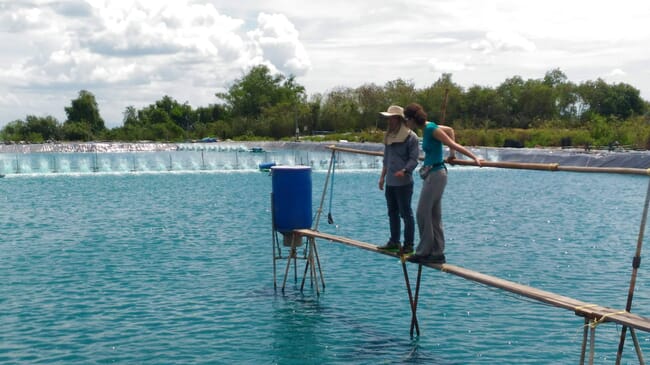Increasing stocking densities tends to cause chronic stress in aquaculture, mainly due to overcrowding and water quality deterioration. However, bioflocs – made from a community of predominantly heterotrophic microorganisms which are stimulated to grow by manipulating the carbon/nitrogen ratio in water and adding an external organic carbon source – help to maintain good water quality by uptaking ammonium and preventing the accumulation of toxic inorganic nitrogen compounds.

© Dr S Barrento
In this study the researchers assessed the zootechnical and physiological performance of whiteleg shrimp (Litopenaeus vannamei) postlarvae (PL) reared in three environments – clear water (CW); B, biofloc (B) and biofloc with artificial substrates (BS) – at three stocking densities (300, 600, 900 PL/m3) for 8 weeks. The shrimp were then subjected to hypoxia, and their physiological response was again assessed.
For the same stocking density, shrimp reared in B and BS showed significantly higher weights than those grown in CW, except for final weight. No significant differences were observed in survival. The use of biofloc and artificial substrates permitted doubling density from 300 to 600 PL/m3 without affecting growth, survival, feed conversion rate and obtaining twice the biomass.
The reason behind this, the researchers suggest, was that shrimp grown in B and BS stored a surplus of glycogen and carbohydrates in their hepatopancreas, “which probably gave them a better physiological capacity to counteract high‐stocking densities and hypoxia”.
The results of the study, which were published in the journal Aquaculture, can be seen in full here.

